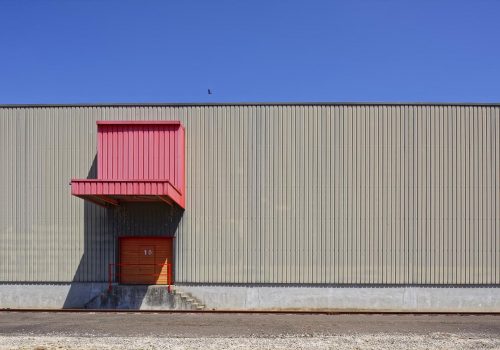The fast acceleration of the online economy development and the e-commerce revolution has obviously changed the way people shop, but it also has somehow surreptitiously transformed discretely, but deeply, the landscape and architecture of our suburban areas. Companies design and build fulfillment centers to satisfy online orders as fast as possible, in the race against the clock for the expected next day or even same day delivery.
In 2008 in the Landscape Journal, Charles Waldheim and Alan Berger had already observed that this new industrial trend “had produced a new form of landscape, a landscape of logistic”. They named it the “Logistic Landscape” defined as “among of the more significant transformations of the built environment over the past decade”. I witnessed firsthand how these logistic buildings have mushroomed and quietly transformed vast suburban areas. They move closer to the core of our cities, and their imposing architecture rapidly alters our environment. Through my lens I watch, as our landscape takes new and stranger forms, more alien shapes. I did not intend to focus on those forms at first, but somehow a pattern appeared when I saw all these images on my screen. In my eyes they emerge like huge cargo ships, exposing valiantly their bow to the horizon, ploughing through the waves. Their minimalistic bare walls possess a certain abstract purity and geometric photographic quality.
The quietness that these buildings project is a sharp contrast to the once crowded and noisy shopping-malls, another “giant architecture”, which, in its time, had transformed our landscape. These former temples of frenzied consumption have been swept away by the waves of newer modern vessels firmly rooted in our lands. As time continues to pass to meet the demands of our click to order lifestyle, what else will change in our architecture?
















